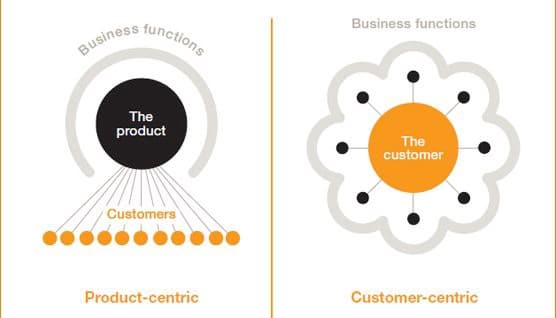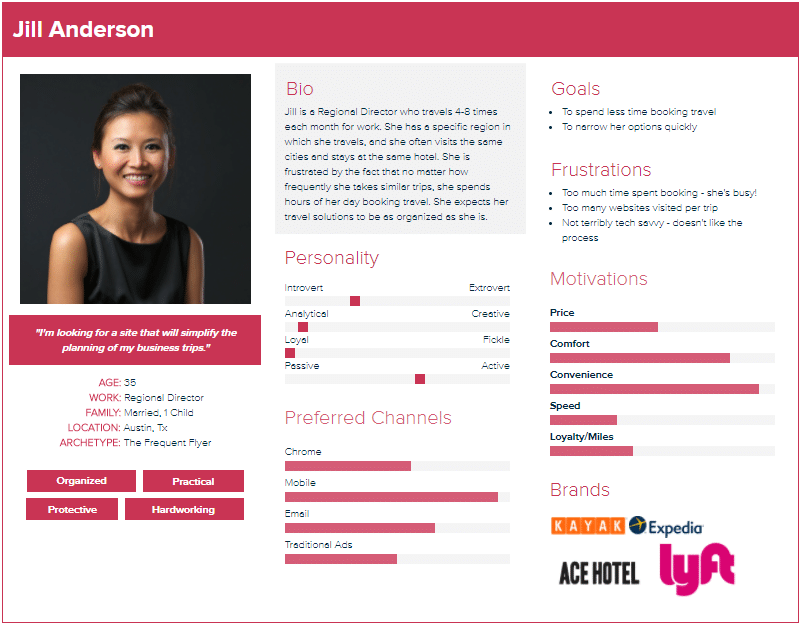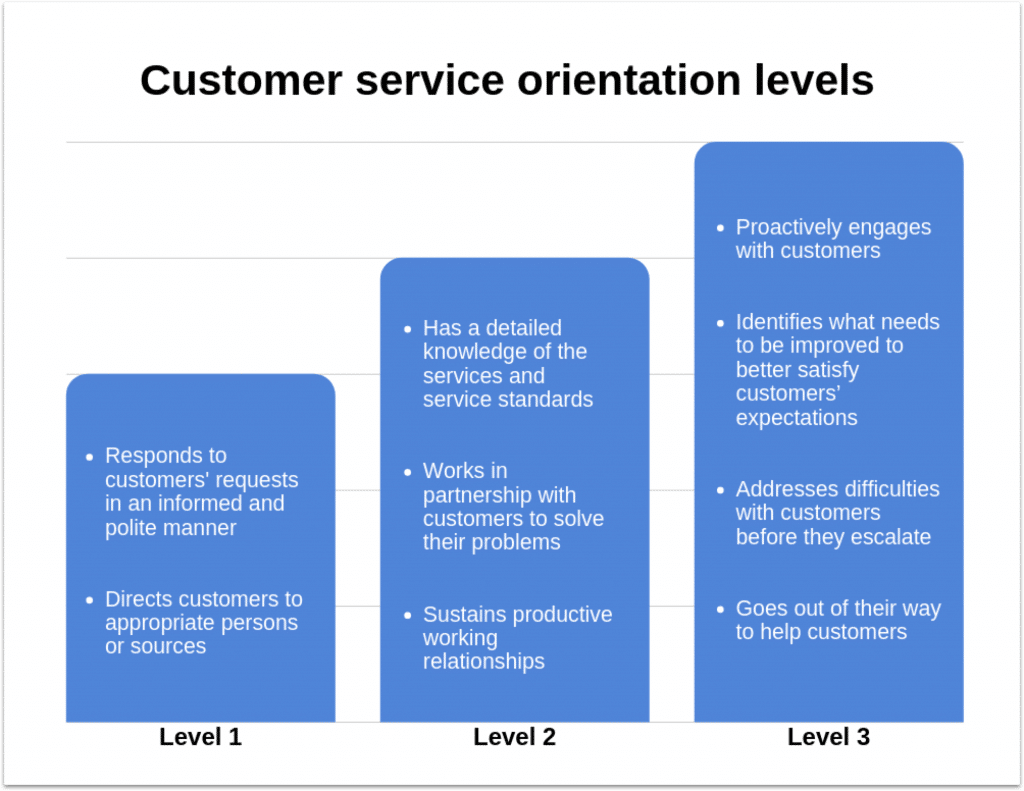
How to Build a Customer-Driven Marketing Strategy for 2023
Every year is the Year of the Customer. The traditional, tried-and-true marketing methods of getting people to know about your brand and buy your products are no longer as effective as they once were. Successful marketing trends in 2023 and beyond will focus on creating great customer experiences and building relationships with your audience.
This shift has already been happening for a while, but not all businesses have fully embraced this new way of thinking about marketing. We’re now at the end of the year, and it’s a great time to be thinking ahead and making strategic decisions for your business that will bring positive returns.
Quick Takeaways:
- Focus on providing great customer experiences and most of the hard work of marketing is done for you.
- Rather than creating products first and seeking out customers later, think about your customers first and use their needs to help you develop products they actually want.
- Knowing and understanding your customers is critical to the success of this strategy. Collect data from several different channels and sources to build up a clear picture of who exactly your target market is.
- Customer-first marketing goes beyond the responsibilities of the marketing team. Everyone in the company must understand how to provide great customer service and experiences.
If your business is not yet putting your customers at the heart of your marketing strategy, now is the time to make the change. And if you think your strategy is already customer-driven, it may well be worth reviewing the process anyway. Many businesses claim that they have their customers’ best interests at heart, but their marketing strategy says something different.
What is Customer-Driven Marketing?
Let’s start by going back to basics: how can you create and execute a customer-driven marketing strategy?
Rather than thinking about your business or your products and how you’re going to market them, you start by thinking about your customers: Who are they? What makes them tick? How can you help solve their problems?
By shifting the focus away from your brand and onto the customer, you ensure you’re meeting their needs. Over time this builds strong customer relationships and builds brand loyalty as you’re demonstrating that you’re working to create better solutions for them and not simply trying to make money out of them.

So this approach means thinking about your customers and their needs before you do anything else. In fact, you’ll soon realize that this strategy goes way beyond marketing. When you consider your customers’ challenges, motivations, and desires first, it affects the entire way you run your business. A customer-driven strategy means you’ll be creating products and services that your customers actually want and need rather than what you think they want.
1. Identify Your Target Market
Is your marketing strategy driven by what you have to sell or the market needs you best fulfill?
If there’s one theme that weaves through most of my content, it’s that successful marketing together it’s a relentless focus on the customer. And the biggest marketing mistake you can make is to just focus on what you have to sell.
You can’t serve your customers if you don’t really know who they are, so the first and most crucial step of building your marketing strategy is to define your market and segment it so you can target each group more effectively.
Depending on your brand and business, you may be targeting one small market segment or several segments with varying needs and characteristics. You might have a good idea of who your customer base is already, but don’t make assumptions. It’s important to carry out thorough market research from a number of sources, including web and social analytics, studying competitors, your own customer databases, and customer surveys in order to build up a true picture of the demographics and needs of each market.
Once you have the data, creating a customer avatar or buyer persona for each target market is the next step. This is a text and visual summary of the average “ideal” customer you’re targeting in each market segment. This can really help you to create marketing materials that resonate with your audience as you have a detailed image in mind of who you’re trying to reach with your marketing messages.

2. Know What They Want
We are living in a time when the main scarcity is our target audience’s time and attention. No matter who you are selling to, your customers still have product and service needs. And they have information, education and entertainment needs as well.
But according to Nielsen, our customers see more than 2,000 marketing messages every single day. The battle for customer attention has moved from a battle of the message, the medium or the technology to one of customer insights.
Thomas Davenport and J.C. Beck define attention economics as: “As content has grown increasingly abundant and immediately available, attention becomes the limiting factor in the consumption of information. Attention economics applies insights from other areas of economic theory to enable content consumers, producers, and intermediaries to better mediate and manage the flow of information in light of the scarcity of consumer attention.”
I often use one of my favorite inspirational quotes on marketing from Peter Drucker:
“The aim of marketing is to know the customer so well that the product or service fits him and sells itself.”
But how do you get to know your customers? You cannot speak to all of them. But there are a few simple ways to use research and a customer-first mindset to drive effective marketing strategy…
Step 1: Speak to a Customer
The best way to gain insights into your target customers is to ask them. Or at least ask a sample of them. Pick some of your best customers, your most-recognized ones or simply the ones who are most open to providing you with feedback.
This is also a really cost-efficient and highly-effective way to develop content on a low budget:
- Ask them about ALL the challenges they faced that led them to seek a solution
- Ask them how they found you
- Ask them what content they looked for and where at each stage of the buying journey
- Ask them why they chose you
You can use these answers to develop testimonial videos, blog posts, webcasts, whitepapers and more marketing content for each stage of the buying journey. And then look to distribute the content in all of the places they told you where they went looking.
Step 2: Formal Research
Having been a sales and marketing professional for both a traditional and a syndicated market research firm, I can promise you that I am not a research purist. But the fact is that formal research is dreadfully under-funded in most organizations.
Like the more informal or qualitative research mentioned above, formal customer insight research should seek to understand the key challenges and issues facing your target customers. It should identify all the challenges they are facing and the relative priorities of each. And it should identify the relative priority of channels where they seek information and the content formats they are looking for at each stage of buyer journey.
Step 3: Keyword Research
Everyone uses a search engine at some point in the buying process. And understanding the keywords they use is not just a good idea for marketing, it is a fundamental need of the business to understand the keywords your customers are using when they search for information.
Keyword research allows you to get inside the minds of your buyers to know what they are thinking at the exact moment when they have a content need. So my suggestion is for every business to build a search-driven marketing plan.
3. Create Solutions for Customers’ Needs and Deliver Value
Your initial customer research should inform you about what your customers actually want. You can then use this market intelligence to develop products and services to meet their needs. This approach is of course the opposite to what many businesses do, which is deciding on their products and services first and then seeking out customers to buy them!
With a customer-first strategy, advertising and traditional marketing methods are no longer needed because you don’t have to hunt out your customers – they’re already right there telling you what you want. As long as you really listen to what they have to say, the hard work is done.
According to a report by Forrester Research titled “Build Your Content Brand By Delivering Customer Value.” Forrester conducted in-depth interviews with marketers, agencies and publishers in order to gain insights into the importance of content marketing, and the top strategies for how brands can become more effective with it.
According to the report’s author, Ryan Skinner,
Content brands are built by becoming reliable sources of valuable content that consumers proactively seek out, engage with and, ultimately, advocate for. Unfortunately, marketers often lack the resources, talent, commitment, and patience to invest in and see results from their content marketing initiatives.
One of the report’s main conclusion is that most content marketing efforts fail to deliver on key objectives due to the “campaign” mindset that continues to pervade the marketing function. Effective content marketing is focused on the continuous delivery of customer value through interesting and engaging content.
Forrester identified four key objectives for effective content marketing:
- Pulls Customers closer to the brand by giving away valuable content
- Amplifies the reach of content that encourages customers to share freely and widely across their social networks
- Reaches customers early in the purchase process
- Tie content marketing efforts into the demand funnel though analytics and CRM integration
According to Forester, the main mistakes marketers make with content marketing:
- The content adds too little value to customers
- Branded content suffers from a lack of a solid distribution strategy to reach customers
- Lack of enough investment to build a brand publishing capability
- The patience to wait for results that don’t come immediately
- Failure to link content marketing efforts to business outcomes
Forrester suggests marketers move from “random acts of content marketing to a true content brand.” This can be achieved by:
- Creating content customers value
- Building audiences as a core asset
- Using audience data to inform future interactions
- Optimizing over time to improve business outcomes
4. Use Feedback to Improve Your Offering
Tools such as live chat and online feedback forums can be a valuable way to communicate with your customers.
Using customer feedback and requests will not only help you to create better products and services in the future, but demonstrating to your customers that you’re listening to their opinion and that it actually matters is a powerful way to build trust and loyalty.
Because customer communication is such a vital part of a customer-driven marketing strategy, your customer service team becomes integral to your overall marketing plan. Ensuring that every person in the company who interacts with customers in any way offers an excellent customer experience brings benefits to both sides. The customer gets the help they need and enjoys positive interactions with your team, and your business builds a better brand reputation and learns more about how to create better products.

When your customers are happy with what they buy from you and how they communicate with you, they’ll tell their friends. And this word-of-mouth marketing can be more powerful and have a bigger and longer-lasting impact than any type of advertising or SEO campaign.
If you are ready to get more traffic to your site with quality content that’s consistently published, check out our Content Builder Service. Set up a quick consultation, and I’ll send you a free PDF version of my books. Get started today and generate more traffic and leads for your business.







Saying 2020 will be the year of the customer is old news. Some of us have been saying it for the last five or more years. Trouble is, marketers have been so busy chasing the next shiny new technology to SOLVE all our marketing issues that we sort of keep forgetting about the customer. Your article is well thought out. But the important issue is for marketers to stop focusing on technology solutions and start focusing on customer performance solutions.
Thanks Bart. It’s true! I’ve been saying it for years too and hoping it comes true. But marketers keep asking “how should I be using snapchat?” and “what is my strategy for TikTok?” when they haven’t even figured out how to maximize their own websites and older social channels like LinkedIn where the context for marketing is much more appropriate. Maybe someday marketing will truly champion customer experience across the company.